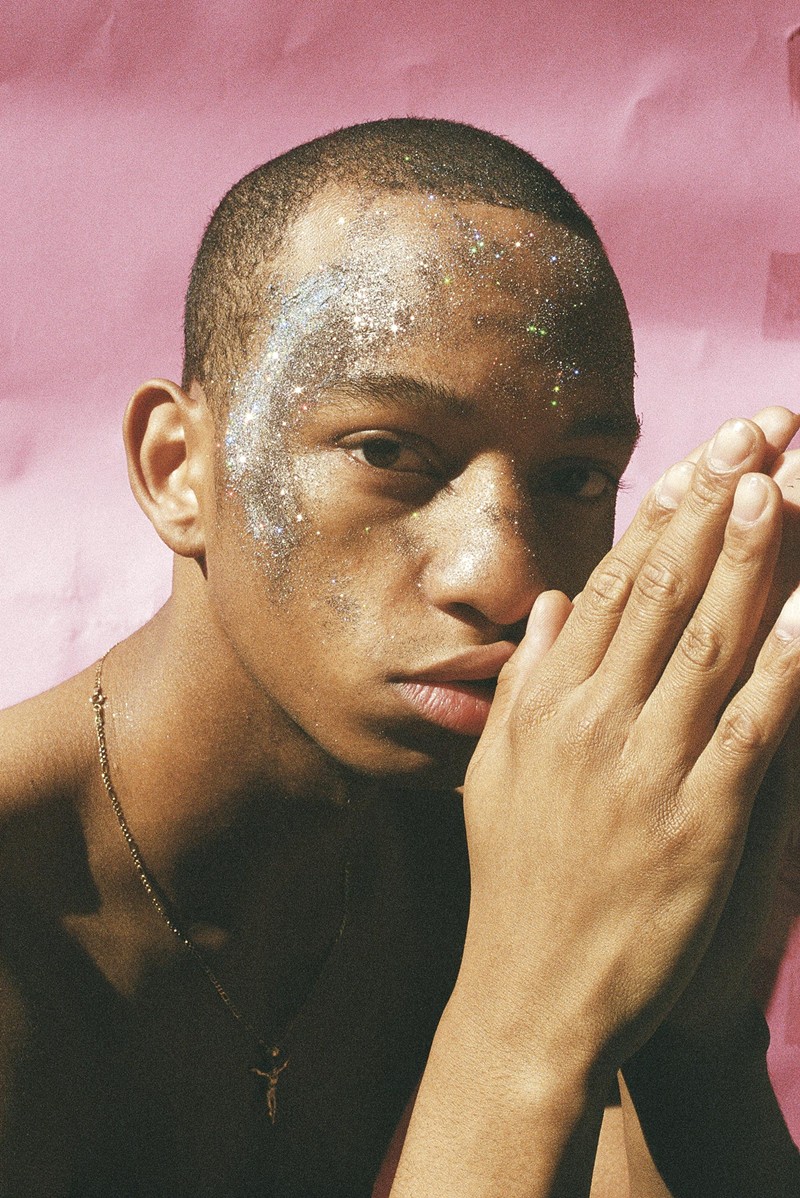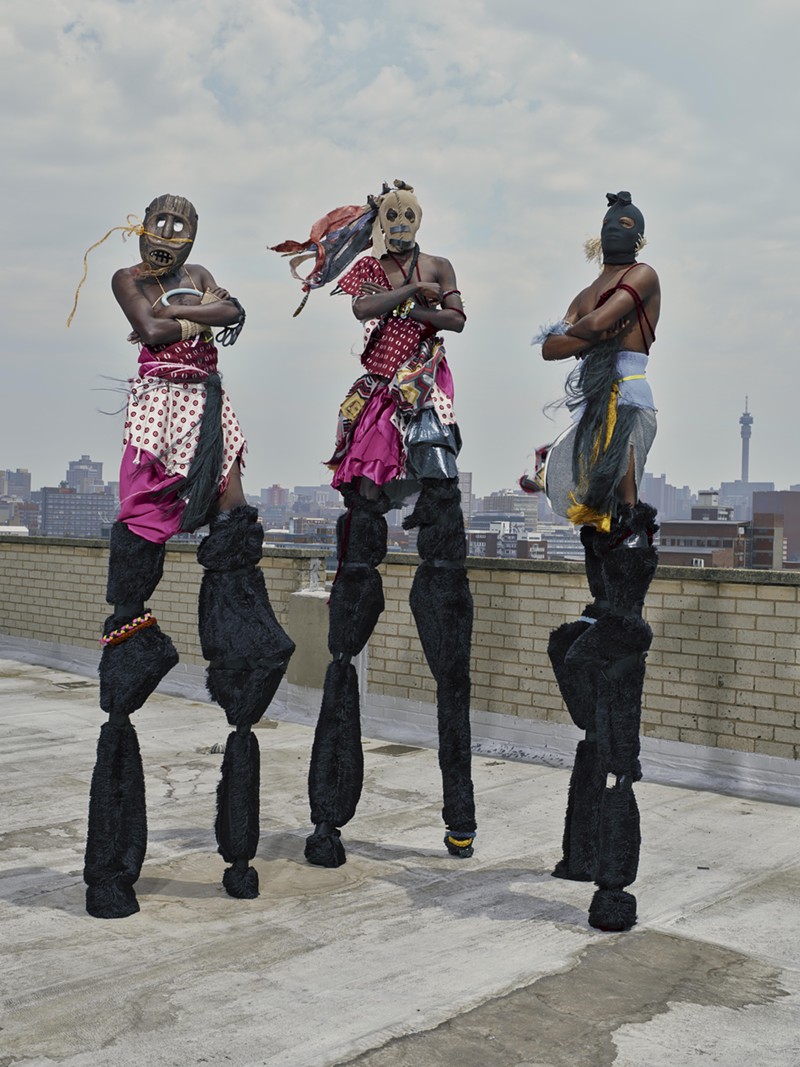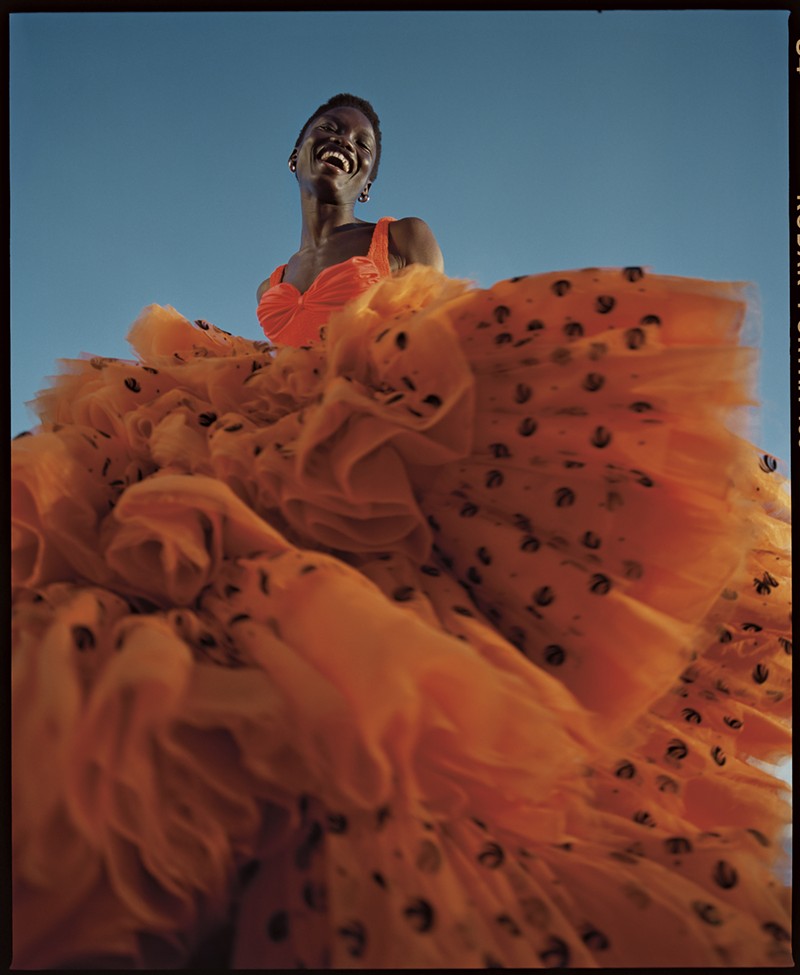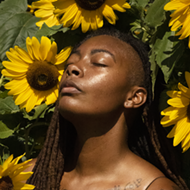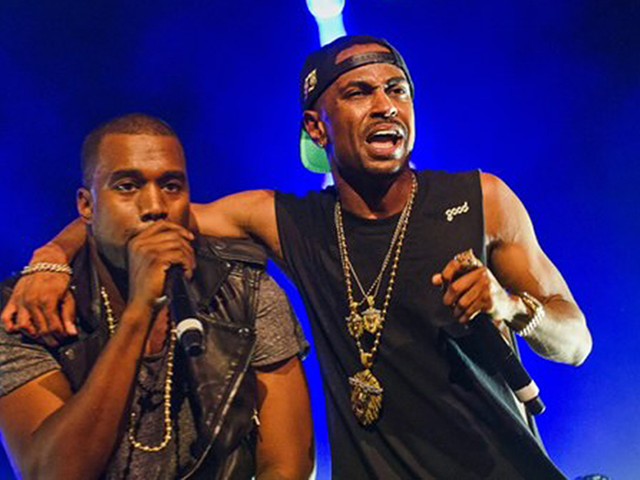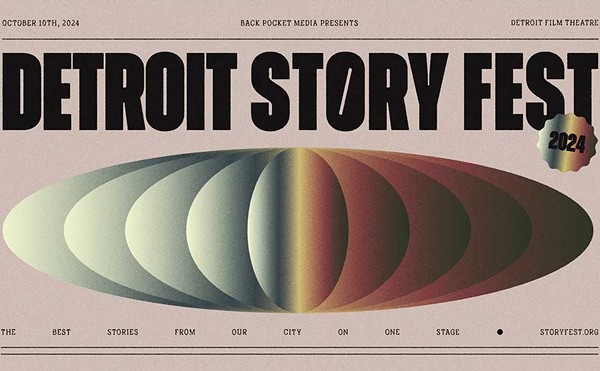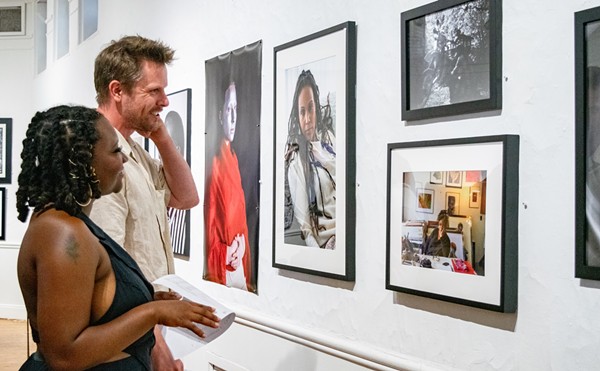Black is goddamn beautiful. Black can be soft, strong, vibrant, gentle, feminine, and masculine simultaneously. And nobody gets to decide for Black people which of those qualities we embody except for us. If you leave the Detroit Institute of Arts after viewing The New Black Vanguard: Photography between Art and Fashion without understanding that, then you’ve missed the whole point.
The exhibit, which opens at the DIA on Friday, Dec. 17, features the work of Black photographers showcasing the African diaspora from the streets of Lagos to the barbershops of the Bronx. The 15 photographers obscure the notions of gender and beauty, putting Black life at the forefront of fashion in more than 100 photographs. The work ranges from editorial shots with boisterous costumes to slices of everyday life.
A young Black man gazes into the camera with a face illuminated by silver glitter against a pink background. This is part of the "Glitterboy" series by Brooklyn-based photographer Quil Lemons. A quote by the photographer in the exhibit explains, “I feel like masculinity is sort of a prison. You can be masculine and gay, or feminine and straight. Now we have more space to play.”
The series is autobiographical as it reflects Lemons’ coming of age journey. He has shot fashion campaigns for brands like Maison Valentino and his work has been published in the likes of Vogue and Allure.
Elsewhere, Swiss Guinean photographer Namsa Leuba captures menacing African figures on a rooftop wearing stilts and masks as the colorful scarves draped around them blow in the wind. It’s a comment on the tendency of non-Black artists to exoticize Africa.
Be sure not to skip out on the very end of the traveling exhibit (all the way at the back), as this is where you’ll find work by local Detroit artists, called New Gazes. The rest of the exhibition was curated by New York art critic and writer Antwaun Sargent, but this section is special to the DIA. It features work by notable Detroiters like Bre’Ann White, Mishira Davis, and more.
"The Coney, Dillan, 9 a.m. at the Coney… Waiting for a 9 Piece and Fries" by Ray Rogers shows such a raw and relatable scene for Detroiters. If you know, you know.
If it isn’t clear by now, all the subjects in the exhibit are Black, and they’re all shot by Black photographers. This is important. Not only for how it touches on Black representation in fashion and art but because the story is being told by Black artists themselves. When you aren’t in control of your own narrative, it can be distorted and framed in ways that misrepresent you.
“We look to the media for ideas of what our future can be and if you don’t see yourself represented, it’s very hard for you to imagine a future for yourself,” Brooklyn-based photographer Myles Loftin commented in an interview for the 2020 Forbes 30 Under 30: Art & Style website. His photo entitled "Butterfly" shows a shirtless dark-skinned man in a grassy field as a piece of flowing fabric behind him gives him wings.
The lack of Black representation among photographers, makeup artists, and hairstylists in the fashion industry is a longstanding issue. Just a few months ago, British model Leomie Anderson made headlines for a viral TikTok highlighting her struggle to find someone to do her hair and makeup properly during fashion week.
Lupita Nyong’o’s skin was considerably lightened in a Vanity Fair spread back in 2014. An animated version of Naomi Osaka appeared in a Nissin Cup Noodle ad that looked straight up white, leaving viewers asking “who the hell is that?” in 2019. Vanity Fair then released a cover of Simone Biles in 2020 that showed the hues of her dark skin looking washed out and dull.
We’re gonna leave it at that because the list of anecdotes is too long. The problem isn’t that the photographers, makeup artists, or animators in any of those stories aren't Black either. The problem is that none of them took the time to learn how to properly feature Black subjects — how to style our hair and showcase our skin.
The New Black Vanguard isn’t having any of that. It features a rainbow of vibrant skin tones from dark to light engulfed in flowers, smiling underneath heaps of tulle, and wearing hijabs. Models don elaborate cornrows, perfectly-angled hi-top fades, and locs. The exhibit teaches viewers, among many things, that there is no such thing as too Black or not Black enough.
People love to frame artists who capture anything other than the standards of “traditional beauty” as “creating a new narrative” within their artform. That’s bullshit. This isn’t new for us.
Black art has always existed. Black women with gaps and nappy hair have always deserved love. Dark skin has always been beautiful. We have been saying these things, the question is whether mainstream society has been listening. This exhibit doesn’t give viewers a choice but to hear what Black photographers and artists have been saying all along.
The New Black Vanguard: Photography between Art and Fashion will be on display at the Detroit Institute of Arts from Friday, Dec. 17 to Sunday, April 17. Museum visitors must make a reservation in advance at dia.org or over the phone at 313-833-4005. Admission is free for residents of Wayne, Oakland, and Macomb counties.
Stay connected with Detroit Metro Times. Subscribe to our newsletters, and follow us on Google News, Apple News, Twitter, Facebook, Instagram, or Reddit.

